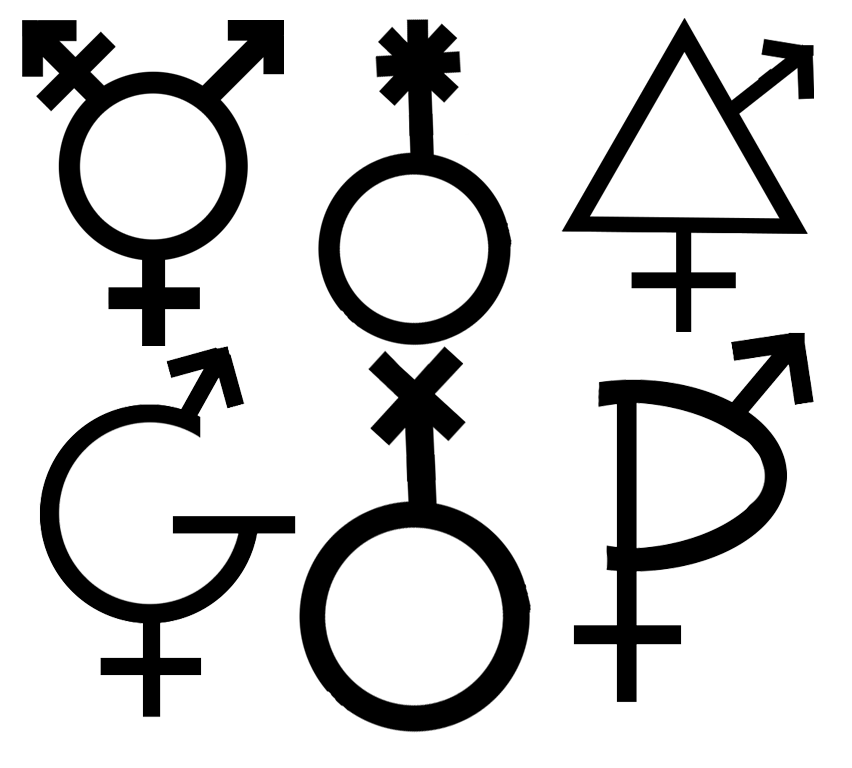Edwards is a Staff Reporter for The Revolution and currently a senior at Albemarle High School. They try to actively participate in Albemarle’s Gay-Straight...
Alternative Gender Identities Gain Awareness as They Crawl Into Popular Media Spotlight
March 27, 2014
You may have seen something on the Colbert Report, Fox News, or any other media outlet about the new gender options on Facebook.
With that, there’s been an apparent bloom in popular media and society involving the subject of transgender identities. What are they? What do they mean? How do they work?
Things like Janet Mock’s (a transwoman and author of the memoir Redefining Realness) interviews with both Piers Morgan and Stephen Colbert, the inclusion of an actual transwoman, Laverne Cox, to play a transwoman on the Netflix hit Orange is the New Black, as well as the aforementioned announcement of Facebook’s custom gender settings have left those unaware of the topic of the varying gender spectrum in the dark- curious and confused as to what these identities are and how they’re relevant to them.
The majority of people, when thinking on gender, immediately associate it with a person’s genitals, which couldn’t be further from the truth. Gender is something that a person identifies with- something completely emotional and mental while one’s sex or genitals is strictly physical.
People whose gender identity follows the traditional identity associated with their genitals are referred to as cisgender.
However, people can and do stray, and these individuals are referred to as transgender. This describes people whose identities stray from the concept of cisnormativity, the construct of gender associating with a person’s sex. This includes people with “male” genitals identifying as female, vice versa, and so on.
However, despite one’s gender identity, there is no requirement for how they represent themselves. Someone who identifies as a male can wear traditionally “feminine” clothes and have female genitalia just as much as someone who identifies as female can wear “masculine” clothes and have male genitalia.
On that note, however, the gender spectrum does not strictly align along the traditional ideas of “masculine” and “feminine”. Gender comes in many forms, and those identities not lined alongside boys and girls (commonly referred to as “binary genders”) are called “non-binary genders”.
Non-binary genders include a seemingly infinite amount of subcategories that people of those identities bend and shape to fit how they feel. Some examples of non-binary gender classifications include agender, bigender, genderfluid, genderqueer, and androgynous identities, but they can be so much more.
With these identities, for some, also come the preference for different sorts of pronouns. Though some non-binary people do stick to classic he/him/his and she/her/hers pronouns, a variety of people will choose a different set, such as the singular forms of they/them/theirs or creative ones like phe/per/pers, zie/zir/zirs, or ne/nis/ner. Some people have a specific single set of pronouns, some have a few, and some have no preferences at all.
It should be mentioned that people can be especially sensitive to pronoun usage. Though it can be difficult for people to change the pronouns and names associated with certain people, a small change can mean the world.
“If your friend hates to be called ‘Matthew’ and prefers ‘Matt,’ it doesn’t make any sense to call him the name that he hates,” Charles Girard, a Washington, DC trans rights activist and AHS Class of 2008 alum said, “In a similar vein, if your friend asks you to use a different name or pronouns to refer to them, do your best to update your language accordingly.”
However, most trans-identified people will understand small mistakes when referring to them.
“Sometimes it can be hard to switch your language,” Girard continued, “but it’s okay if you mess up as long as you’re trying! Ultimately, using someone’s preferred pronouns is about respect.”


Jane Cornelius • Aug 20, 2014 at 10:39 am
Hello! I am so pleased to see this important topic addressed in the AHS newspaper. Kudos to you for bringing awareness and understanding to a very timely issue.
Best wishes,
Jane Cornelius
President, PFLAG Blue Ridge
Charlottesville